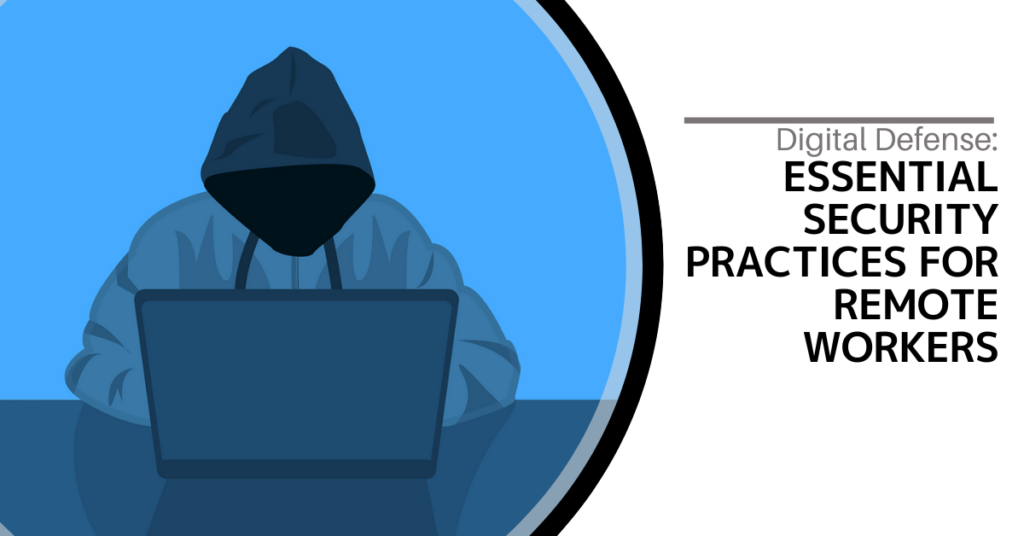|
Getting your Trinity Audio player ready...
|

The shift to remote work has transformed the modern business environment. Traditional office routines and daily commutes are becoming a thing of the past. However, with this flexibility comes a new challenge—cybersecurity. Remote work often exposes your company’s data and systems to potential vulnerabilities.
In fact, 73% of business leaders believe that remote work heightens security risks.
But this doesn’t mean you can’t safeguard your operations. In this guide, we’ll explore key security measures for remote teams, ensuring that your company data remains secure no matter where you work.
1. Strengthen Your Home Network
Ensure Wi-Fi Encryption is Up-to-Date
It’s crucial to use modern security protocols, like WPA3, to encrypt your Wi-Fi network. This is a fundamental step in protecting your home internet. It helps prevent unauthorized users from accessing your network and stealing data.
Update Default Router Credentials
Many routers come pre-configured with generic usernames and passwords, which are easy for cybercriminals to exploit. To enhance your network’s security, change these to strong, unique login details, reducing the chances of unauthorized access.
2. Use Robust and Unique Passwords
Rely on Password Managers
With remote work requiring access to multiple platforms, managing numerous passwords can be overwhelming. Password managers can generate, store, and auto-fill complex passwords, making it easier to maintain security while ensuring each account has a strong, unique password.
Enable Multi-Factor Authentication (MFA)
Adding an extra layer of protection with MFA can be a game-changer. Even if someone gains access to your password, they’ll still need a second form of verification, like a code sent to your phone, to access your account. This significantly reduces the chances of a breach.
3. Safeguard Your Devices
Keep Antivirus and Anti-Malware Software Updated
Ensure all work-related devices have up-to-date antivirus or anti-malware software installed. These tools detect and eliminate threats before they cause significant damage.
Regularly Update Software
Outdated software is a prime target for cybercriminals. To stay ahead of potential threats, set up automatic updates for your operating system, apps, and security tools.
Use Encrypted Storage
For sensitive work data, using encrypted storage options is vital. This ensures that even if your device is lost or stolen, unauthorized users can’t access the data. You can leverage both built-in device features and external solutions for this.
4. Secure Your Communication Channels
Utilize Virtual Private Networks (VPNs)
A VPN encrypts your online activity, making it much harder for anyone to intercept or steal your data. This is especially important when using unsecured public Wi-Fi or accessing company systems remotely. Always choose a reliable VPN service for maximum security.
Rely on Encrypted Messaging and Email Services
To protect the contents of your communications, use messaging and email platforms that offer encryption. This ensures that sensitive information remains secure and is only accessible to intended recipients.
5. Practice Safe Browsing Habits
Enhance Browser Security
Configure your browser for optimal security. This includes enabling pop-up blockers, disabling third-party cookies, and using secure HTTPS connections wherever possible.
Stay Alert to Phishing Threats
Phishing attacks are among the most common threats for remote workers. Be cautious of unsolicited messages asking for sensitive data or login credentials. Always verify the source before clicking on links or downloading attachments. If in doubt, report the message to your IT team for further investigation.
Employ Ad Blockers
Using an ad blocker can prevent harmful ads, which often contain malware or phishing links, from appearing while browsing. This adds an extra layer of defense to your online activity.
6. Prioritize Continuous Security Education
Ongoing Security Training
Regular security training is essential to keep employees up-to-date on the latest threats and best practices. Training should include simulated phishing tests and education on safe data handling practices.
Have an Incident Response Plan
Establishing a clear response plan is vital. In the event of a security breach, all employees should know what steps to take. This plan should cover reporting procedures, mitigation strategies, and IT department contact details.
7. Foster Personal Accountability
Maintain Device Hygiene
Encourage employees to regularly back up their personal devices and follow secure configurations. Separating personal and work activities on devices can also help reduce the risk of a breach.
Be Aware of Social Engineering Scams
Social engineering attacks prey on human psychology to gain access to systems and data. Common tactics include pretexting and baiting. Employees should be vigilant and skeptical of suspicious interactions, helping them avoid falling victim to these schemes.
Looking to Enhance Your Remote Work CyberSecurity?
Remote work is here to stay, and with it comes evolving cybersecurity challenges. It’s important to adapt your security practices accordingly to combat growing threats.
Need help fortifying your cybersecurity? Our team of experts can assist you in developing a solid security strategy for remote work. Contact us today to get started!
Twintel has grown into an expansive, full team of IT services professionals, acting as the outsourced IT department of non-profits, small to mid-size businesses, and enterprise-level corporations in Orange County, across California, and nationally.
Today, it’s the strength and deep expertise of the Twintel team that drives positive outcomes for clients. Each of the support staff, technicians, and engineers works diligently each day to make sure that the companies served have the seamless, secure, and stable IT environments needed to allow them to pursue their organizational objectives.